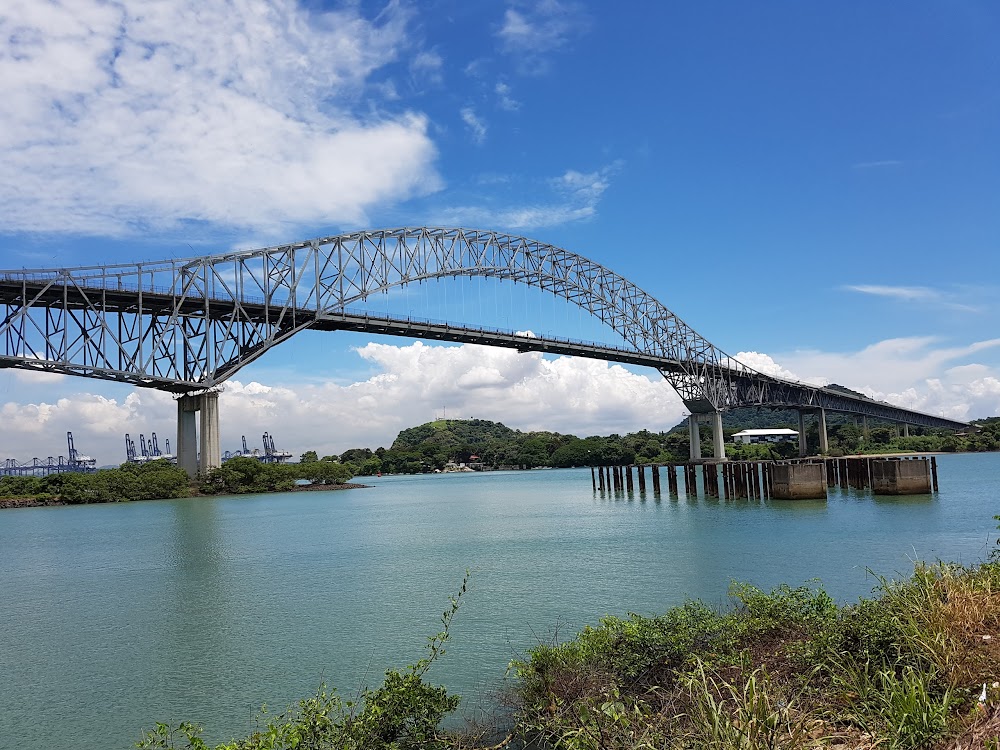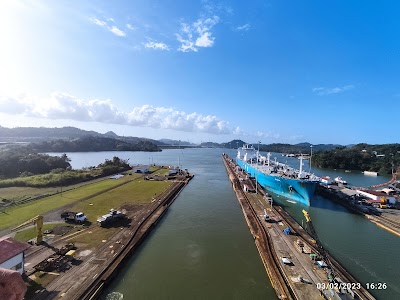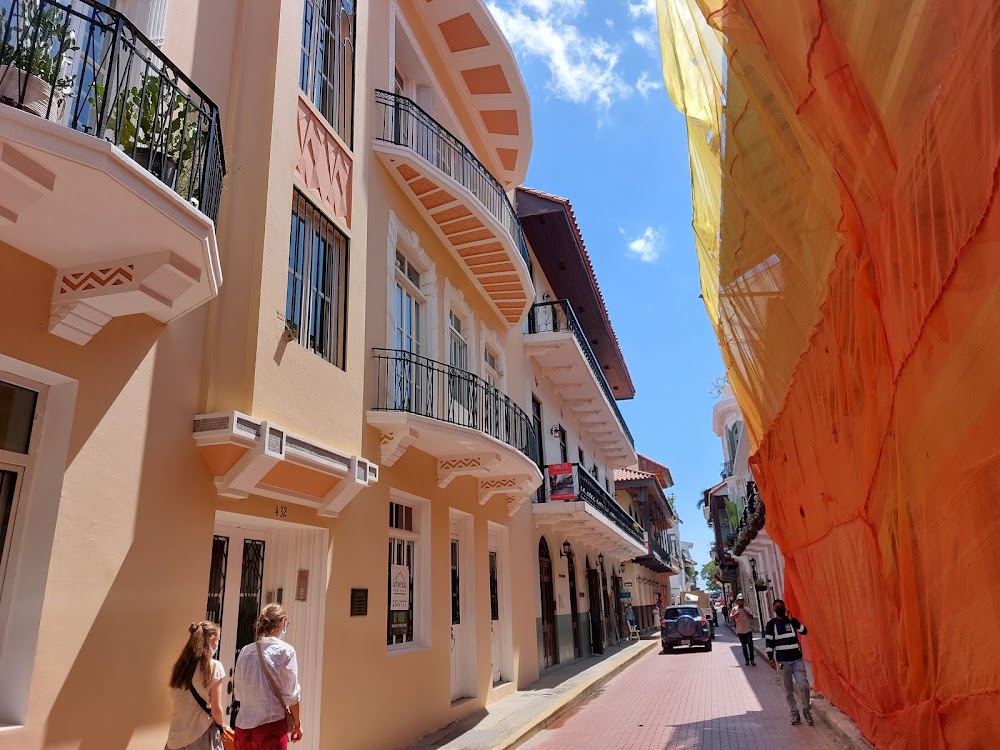Bridge of the Americas (Puente de las Américas)
Overview
In the heart of Central America, gracefully spanning the Panama Canal, stands the magnificent Bridge of the Americas. Located in the vibrant city of Panamá within the Panama Province, this iconic structure not only bridges the land divided by the canal but also serves as a powerful symbol of unity and engineering excellence.
The inception of the Bridge of the Americas stemmed from a pressing need for reliable transportation. Prior to its construction, the only means to cross the Panama Canal were by ferry or a small movable bridge. As traffic increased and the significance of the canal grew, the U.S. government, which oversaw the canal at the time, initiated the bridge project in 1959 to provide a permanent solution for this logistical challenge.
Designed by the esteemed engineering firm Sverdrup & Parcel, the bridge's construction was a monumental task that took approximately three years. Officially opened on October 12, 1962, the project involved meticulous planning and the efforts of thousands of workers who faced numerous challenges, including the region's intense tropical climate and the complexity of building over a busy canal frequented by large vessels.
The Bridge of the Americas is an impressive arch bridge, featuring a main span of 1,654 feet and soaring 384 feet above the water at high tide. With a total length of 5,425 feet, its design accommodates the passage of massive cargo ships beneath it, ensuring the seamless operation of the canal. The bridge consists of two lanes in each direction, facilitating the daily transit of thousands of vehicles.
Strategically significant, the bridge connects vital land routes across the Americas, forming a continuous link in the Pan-American Highway, which stretches from Alaska to Argentina. It stands as not just a practical infrastructure project but also a potent symbol of the interconnectedness of North and South America.
Constructed with advanced technology for its time, the bridge utilized high-strength steel and pre-stressed concrete for durability and robustness. Workers employed large floating cranes and barges to position the heavy steel sections with remarkable precision. Safety was a paramount concern, with stringent measures implemented to protect the workforce from the perils associated with high-altitude construction and heavy machinery.
Upon its completion, the bridge was initially named the Thatcher Ferry Bridge, honoring the ferry service it replaced. However, in 1979, following the Torrijos-Carter Treaties, it was renamed the Bridge of the Americas, a title that more accurately reflected its role in connecting North and South America while highlighting Panama's sovereignty over the canal and its surrounding infrastructure.
Today, the Bridge of the Americas remains an essential transportation link and a popular tourist attraction. Visitors flock to admire its stunning architecture and to enjoy breathtaking views of the canal and the Pacific entrance. The bridge has also inspired countless artists, photographers, and filmmakers, capturing the essence of Panama's spirit and ingenuity.
In essence, the Bridge of the Americas stands as a testament to human innovation and international collaboration. Its rich history and imposing presence serve as a reminder of the incredible power of engineering to connect and sustain our world, making it a must-visit landmark in Panama.







